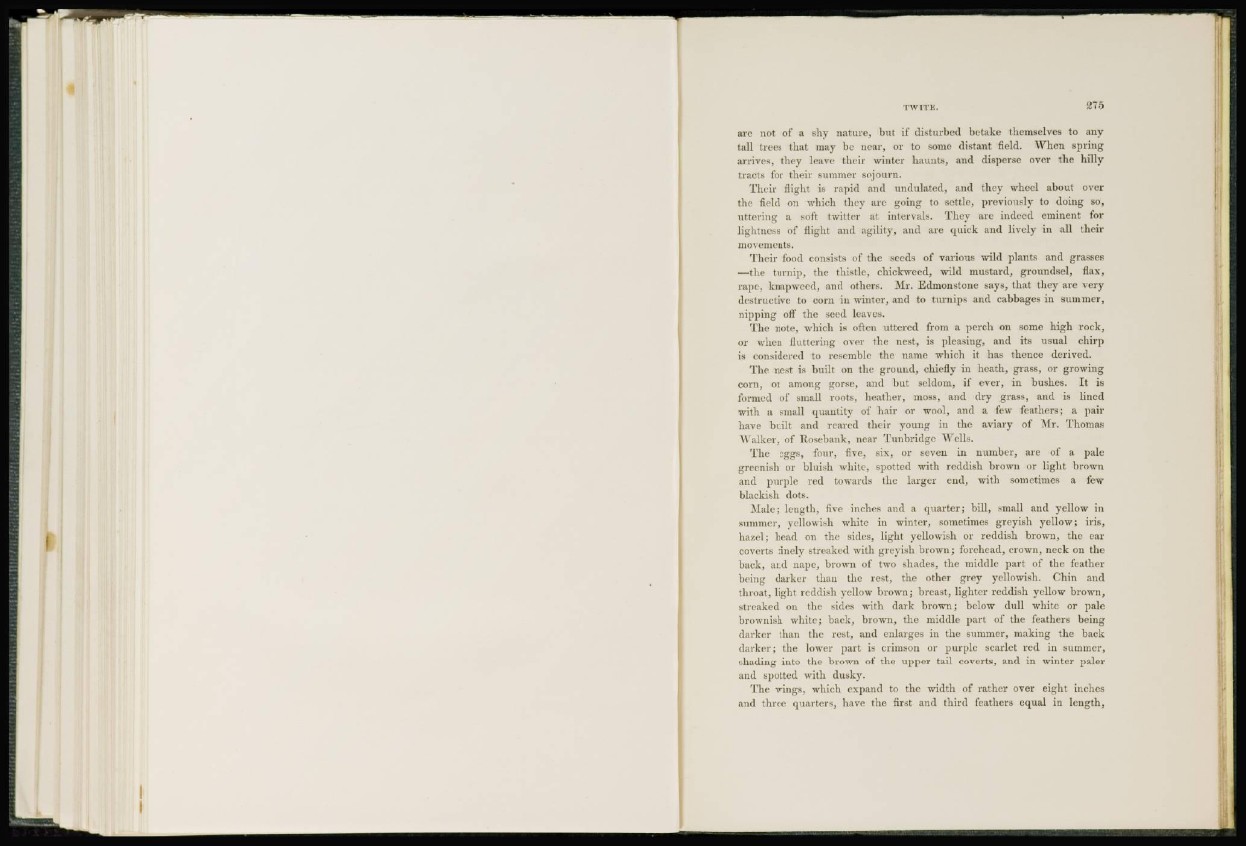
are not of a shy nature, but if disturbed betake themselves to any
tall trees that may be near, or to some distant field. When spring
arrives, they leave their winter haunts, and disperse over the hilly
tracts for their summer sojourn.
Their flight is rapid and undulated, and they wheel about over
the field on which they are going to settle, previously to doing so,
uttering a soft twitter at intervals. They are indeed eminent for
lightness of flight and agility, and are quick and lively in all their
movements.
Their food consists of the seeds of various wild plants and grasses
—the turnip, the thistle, chickweed, wild mustard, groundsel, flax,
rape, knapweed, and others. Mr. Edmonstone says, that they arc very
destructive to corn in winter, and to turnips and cabbages in summer,
nipping off the seed leaves.
The note, which is often uttered from a perch on some high rock,
or when fluttering over the nest, is pleasing, and its usual chirp
is considered to resemble the name which it has thence derived.
The nest is built on the ground, chiefly in heath, grass, or growing
corn, or among gorse, and but seldom, if ever, in bushes. It is
formed of small roots, heather, moss, and dry grass, and is lined
with a small quantity of hair or wool, and a few feathers; a pair
have built and reared their young in the aviary of Mr. Thomas
Walker, of Rosebank, near Tunbridge \\ e l l s.
The eggs, four, five, six, or seven in number, are of a pale
greenish or bluish white, spotted with reddish brown or light brown
and purple red towards the larger end, with sometimes a few
blackish dots.
Male; length, five inches and a quarter; bill, small and yellow in
summer, yellowish white in winter, sometimes greyish yellow; iris,
hazel; head on the sides, light yellowish or reddish brown, the ear
coverts finely streaked with greyish brown; forehead, crown, neck on the
back, and nape, brown of two shades, the middle part of the feather
being darker than the rest, the other grey yellowish. Chin and
throat, light reddish yellow brown; breast, lighter reddish yellow brown,
streaked on the sides with dark brown; below dull white or pale
brownish white; back, brown, the middle part of the feathers being
darker than the rest, and enlarges in the summer, making the back
darker; the lower part is crimson or purple scarlet red in summer,
shading into the brown of the upper tail coverts, and in winter paler
and spotted with dusky.
The wings, which expand to the width of rather over eight inches
and three quarters, have the first and third feathers equal in length,